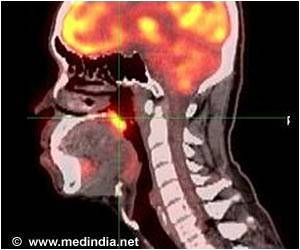Regulating the expression of at the cellular level and using the body's own immune response to fight the tumor cells would give more effective outcomes.

- The complex anatomy of the head and neck region and the tumor proximity to several vital organs hinders conventional treatment options.
- The defective Kv1.3 channels, which regulate calcium ions (Ca2+) present in T cells contribute to the inability of the immune system to fight off head and neck cancers.
- Overexpressing the Kv1.3 channels in an animal model with cancer lead to increased survival.
Head and neck squamous cell carcinoma is the sixth most common type of cancer, with a 5-year survival of 50%.
The defective Kv1.3 channels, which regulate calcium ions (Ca2+) present in T cells, and Ca2+ abnormalities in tumor infiltrating lymphocytes, may contribute to the inability of the immune system to fight off head and neck cancers.
By regulating their expression at the cellular level and using the body's own immune response to fight the tumor cells, patients with these cancers could have better, more effective outcomes.
"The heterogeneity of these tumors, the complex anatomy of the head and neck region and the proximity of these tumors to several vital organs and structures present a challenge in conventional treatment options of these cancers.”says Laura Conforti, PhD, professor in the Department of Internal Medicine at the UC College of Medicine, a researcher within the UC Cancer Institute and corresponding author on the study.
Immunotherapies aimed to boost the immune system to fight cancer cells are showing promising results in this group of patients.
"The extent to which CD8+ cells, a type of T cell capable of killing cancer cells, infiltrate the head and neck tumor affects disease progression and responsiveness to therapy," she says.
The function of CD8+ lymphocytes depends on Ca2+, which is controlled by ion channels. In particular, Kv1.3 ion channels regulate Ca2+ influx into T cells.
In this study, researchers assessed the role of Kv1.3 channel and Ca2+ fluxes on these lymphocytes' function in head and neck cancer.
Conforti says that her team, led by Ameet Chimote, PhD, research associate in the Division of Nephrology and Hypertension, used tumor samples and blood from 14 patients with head and neck cancers to analyze how Kv1.3 effected the function of tumor infiltrating T lymphocytes.
They found a 70% reduction in functional Kv1.3 channels in tumor infiltrating lymphocytes as compared to the blood T cells, which was accompanied by a decrease in Ca2+ levels and reduced ability to attack and kill cancer cells.
"Overall our data showed that suppression of Kv1.3 channels in these lymphocytes, the cells that fight off cancer, contribute to their decreased function, raising the possibility that this channel may be used as a potential marker of functionally competent T cells that have infiltrated the tumor mass," Conforti says.
These findings are particularly timely as a recently published study in Nature proposes these channels as potential new target for immunotherapy in cancer.
The authors in this study reported that overexpressing these channels in an animal model with cancer lead to increased survival.
Further studies are needed on this T cell channel to find out more about its effects on head and neck cancer and ways to target it to improve outcomes.
Source-Medindia











